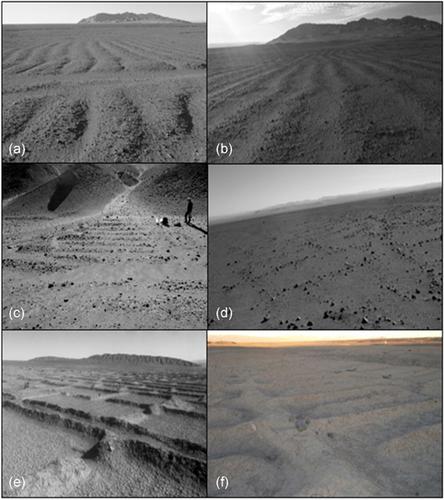当前位置:
X-MOL 学术
›
Geoarchaeology
›
论文详情
Our official English website, www.x-mol.net, welcomes your
feedback! (Note: you will need to create a separate account there.)
Soil use in pre-Hispanic and historical crop fields in the Guatacondo Ravine, northern Chile (2400 years BP): A geoarchaeological and paleobotanic approach
Geoarchaeology ( IF 1.4 ) Pub Date : 2021-01-14 , DOI: 10.1002/gea.21833 Camila Segura 1 , Ale Vidal 2 , Antonio Maldonado 3 , Mauricio Uribe 4
Geoarchaeology ( IF 1.4 ) Pub Date : 2021-01-14 , DOI: 10.1002/gea.21833 Camila Segura 1 , Ale Vidal 2 , Antonio Maldonado 3 , Mauricio Uribe 4
Affiliation

|
In one of the most arid places on Earth, the Atacama Desert in northern Chile (18–21° S), pre-Hispanic cultures developed different types of tillage and irrigation systems in the Guatacondo Ravine. Their agrarian production, based on a summer precipitation regime, enabled the formative villages of Ramaditas (2300–2600 years BP) and Guatacondo (2400–2800 years BP) to emerge, along with seasonal agriculture. Despite the insight gained into their agricultural technology, we know very little about how this type of soil management affected the soils' plant nutrient status. Thus, our main objective was to determine if the different tillage systems affected the soils' properties. We analyzed the soils and the pollen composition of different tillage systems and carried out direct radiocarbon dating (14C) of sediments. The soils' chemical properties (total nitrogen, phosphorus, and organic carbon contents) indicate greater nutrient retention in the square bed system, associated with a higher silt content and the use of organic fertilizers. Pollen analyses show the presence of crop, weed, and riparian species. In conclusion, the analysis of ancient soils gives us valuable information about the innovations and changes implemented in ancient times in the Guatacondo Ravine.
中文翻译:

智利北部瓜塔孔多峡谷(距今 2400 年)西班牙前和历史农田的土壤利用:地质考古学和古植物学方法
在地球上最干旱的地方之一,智利北部的阿塔卡马沙漠(南纬 18-21 度),前西班牙文化在瓜塔康多峡谷开发了不同类型的耕作和灌溉系统。他们的农业生产以夏季降水制度为基础,使 Ramaditas(公元前 2300-2600 年)和 Guatacondo(公元前 2400-2800 年)的形成性村庄以及季节性农业得以出现。尽管对他们的农业技术有所了解,但我们对这种土壤管理如何影响土壤的植物养分状况知之甚少。因此,我们的主要目标是确定不同的耕作系统是否会影响土壤的特性。我们分析了不同耕作系统的土壤和花粉组成,并进行了直接放射性碳测年(14C) 沉积物。土壤的化学特性(总氮、磷和有机碳含量)表明方床系统中的养分保留更高,这与更高的淤泥含量和有机肥料的使用有关。花粉分析显示存在作物、杂草和河岸物种。总之,对古代土壤的分析为我们提供了有关古代在 Guatacondo 峡谷实施的创新和变化的宝贵信息。
更新日期:2021-01-14
中文翻译:

智利北部瓜塔孔多峡谷(距今 2400 年)西班牙前和历史农田的土壤利用:地质考古学和古植物学方法
在地球上最干旱的地方之一,智利北部的阿塔卡马沙漠(南纬 18-21 度),前西班牙文化在瓜塔康多峡谷开发了不同类型的耕作和灌溉系统。他们的农业生产以夏季降水制度为基础,使 Ramaditas(公元前 2300-2600 年)和 Guatacondo(公元前 2400-2800 年)的形成性村庄以及季节性农业得以出现。尽管对他们的农业技术有所了解,但我们对这种土壤管理如何影响土壤的植物养分状况知之甚少。因此,我们的主要目标是确定不同的耕作系统是否会影响土壤的特性。我们分析了不同耕作系统的土壤和花粉组成,并进行了直接放射性碳测年(14C) 沉积物。土壤的化学特性(总氮、磷和有机碳含量)表明方床系统中的养分保留更高,这与更高的淤泥含量和有机肥料的使用有关。花粉分析显示存在作物、杂草和河岸物种。总之,对古代土壤的分析为我们提供了有关古代在 Guatacondo 峡谷实施的创新和变化的宝贵信息。











































 京公网安备 11010802027423号
京公网安备 11010802027423号